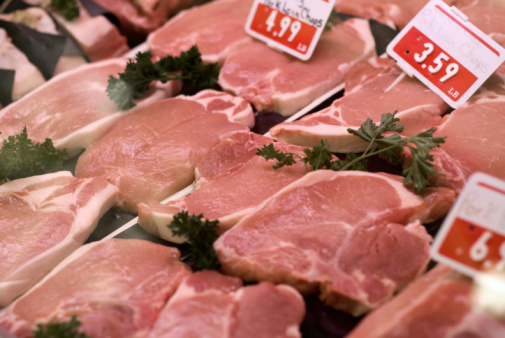Losing Weight While Breast-feeding
Breast-feeding requires extra nutrition, making healthy eating just as important post-pregnancy. Women who are breast-feeding use about 500 calories daily to make the full amount of milk most babies need from birth to 6 months. Two-thirds of those calories should come from meals and snacks containing foods from all five food groups. The remaining calories come from the weight gained during pregnancy. While many women find breast-feeding helps them lose weight, weight loss varies among mothers depending on physical activity, the amount of weight gained during pregnancy and how much breast milk is produced.
A slow, gradual weight loss of 1 pound per week or 4 pounds per month is a safe goal for breast-feeding moms who want to return to their pre-pregnancy weight. Women who eat less than 1,800 calories per day may reduce the amount of milk their bodies make. Stress, anxiety and fatigue can also decrease milk production. Do yourself and your baby a favor — relax and sit down to eat three meals per day. Be sure to drink plenty of fluids and choose healthy snacks between meals. Moderate physical activity, such as walking, is also good for you and will not reduce milk volume.
Choosing the Right Foods
Eating right while breast-feeding is not complicated and it does not need to be bland. Mothers from many cultures breast-feed successfully on a diet of widely varied foods. Follow these guidelines to reach a healthy weight while keeping your baby well-nourished.
- Eat a variety of foods from all five food groups. Visit ChooseMyPlate.gov to get a personalized eating plan for breast-feeding women.
- For protein, choose lean meat, poultry, fish, beans, eggs, nuts and seeds. Eat no more than 12 ounces per week of fish and shellfish and no more than 6 ounces per week of albacore tuna. Avoid fish with high mercury levels, such as shark, swordfish, king mackerel and tilefish.
- Eat colorful fruits and vegetables. Fill half your plate with vegetables and fruit at lunch and dinner, and include fruit and vegetables in snacks. Whole fruit is better than juice, so limit juice to 1 cup per day and make sure it’s 100-percent juice.
- Include three servings of low-fat or fat-free milk, yogurt or cheese each day. If you don’t think you can tolerate milk, try lactose-free milk or calcium-fortified soy milk.
- Choose whole-wheat bread, brown rice and whole-wheat pasta more often than refined grains.
- Use healthful oils, such as olive oil, canola, soybean and corn oil, but in small amounts since they can amount to extra calories.
- Drink enough water and decaffeinated unsweetened beverages to quench your thirst. While you are breast-feeding, your need for fluids increases. Limit caffeine-containing beverages — including coffee, tea and soft drinks — to one or two 8-ounce cups a day.
- Make smart food choices that are low in “empty calories.” Empty calories are found in foods high in added sugars and fats including soft drinks, desserts, fried foods and fatty meats.
- Vitamin and mineral supplements cannot replace a healthy diet. Talk with your doctor before taking any vitamin or mineral supplements.
- If you have special nutrition needs, consult a registered dietitian nutritionist for a customized eating plan.
-
Why You Shouldnt Worry About Losing The Baby Weight
-
Stress Can Help Make You Fat
Do you know by not using proper stress management techniques or stress
-
Weight Loss? - No More Nightmares
Nightmares to weight loss? There are few healthy eating ways to ena
-
The Healthy Truth: Fit and detox teas
Dear Friend, Ask anyone who knows me, and they will tell you I’
-
Do You Want to Be the Next Biggest Loser?
Are you a fan of the Biggest Loser TV show? Many of our clients lo
-
Prunes Not Just For Old Folks
If you’re looking to achieve good health, adding prunes into yo
- DON'T MISS
- The Mediterranean Diet
- Secrets For Quicker And Bigger Weight Loss Results
- How to Get Fat Burning Results Faster
- Low Carb Diets An Unhealthy Gimmick
- Book review- Switched On-harnessing the power of Nutrigenomics to optimise your health by Christine Houghton
- Quickly Get into Great Shape for Summer
- Are You Working With Purpose?
- Alkaline Detox Diet -- Better Health, Fat Loss And Increased Energy Are Possible!
- How to Become Skinny Quick!
- Quick Weight Loss – How To Burn Fat Fast!




